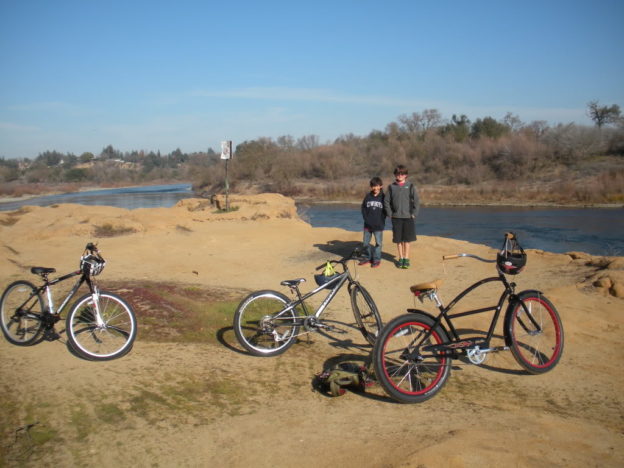What a year! In the face of grim news about our warming atmosphere and changing climate, we saw a lot of new bicycle infrastructure installed in our region, and more public funding to make even more progress. SABA’s work on behalf of clean, healthful, sustainable transportation has never been more important. Read more below about some of our most important accomplishments from 2018.
But first, if you value this work, please consider showing your support with a tax-deductible, year-end gift. Click here to give online using your credit or bank card or directly from your bank account. Thank you!
Advocacy
Bike share
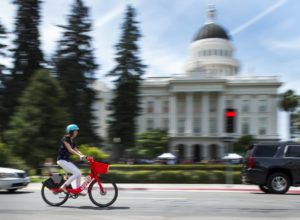
When the regional bike share system launched this spring, we worked with the Sacramento Area Council of Governments , the agency that manages the regional bike share program, to help introduce the system, especially to underserved neighborhoods.
Meanwhile, we are part of a steering committee to advise on a possible bike share system in Rancho Cordova and Folsom. We continue to be a strong champion of bike share as a way to replace short car trips with bike trips.
Protected bikeways
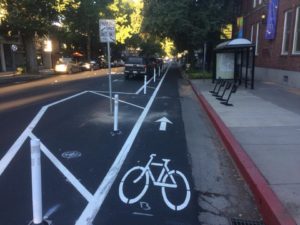
Since this spring, the City of Sacramento has installed the city’s first protected bikeways on 9th, 10th, J, P and Q streets in downtown Sacramento.
Meanwhile, the City of West Sacramento is completing its second protected bikeway project, near 5th Street and Tower Bridge Gateway, and planning protected bikeways and buffered bike lanes along West Capitol Ave. And the City of Rancho Cordova continues work toward installing its first protected bikeway on Routier Road and Rod Beaudry Drive.
We continue to be strong advocates for protected bikeways as the way to make busy streets function more safely and comfortably for a wider variety of bicyclists, especially those who are the most reluctant to ride directly next to vehicle traffic. Read more here.
Connecting the Grid
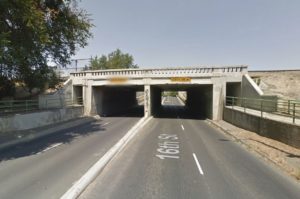
Even as the City of Sacramento continues to install protected bikeways in the downtown Grid, notable disconnects persist at freeway ramps along the south and east edges of the Grid, in the part of downtown north of P St. and west of 16th St., and north of downtown to the American River.
In January, when Sacramento County closed the Jibboom Street Bridge for a 6-month-long rehab project, we generated some media attention to the need for more bridges across the American River. And this spring we went directly to the community and heard strong demand for much better access for bikes on N. 16th Street.
Off-street paths
We’ve been actively involved with generating public support for new off-street multi-use biking and walking paths, including the Mather Heritage Trail in Rancho Cordova, the Sycamore Trail in West Sacramento, the Dry Creek Greenway West in Roseville and the Sacramento River Parkway, Del Rio Trail and the Two Rivers Trail in Sacramento.
Our efforts include providing technical assistance where needed, and also advising elected officials, residents and prospective users about the ways that multi-use paths enable healthy activity, provide safe, car-free routes for bicycling, and activate isolated areas.

No on Prop 6
 Prop. 6 on the Nov. 2020 ballot would have repealed the gas tax increase enacted last year in California and made it nearly impossible to enact future increases. As of this fall, new gas tax revenues had increased the City of Sacramento’s transportation budget by 50%. Prop. 6 would have been disastrous for our region and the state by eliminating this funding. We joined hundreds of organizations, businesses, professional associations and local government agencies throughout California to defeat Prop. 6. California voters rejected the measure by 57% to 43%.
Prop. 6 on the Nov. 2020 ballot would have repealed the gas tax increase enacted last year in California and made it nearly impossible to enact future increases. As of this fall, new gas tax revenues had increased the City of Sacramento’s transportation budget by 50%. Prop. 6 would have been disastrous for our region and the state by eliminating this funding. We joined hundreds of organizations, businesses, professional associations and local government agencies throughout California to defeat Prop. 6. California voters rejected the measure by 57% to 43%.
Countywide transportation funding
The Sacramento region spends too little on transportation. Regionally, our spending is lower than comparable metropolitan areas elsewhere in California. That’s partly the result of not having enough locally controlled funding for transportation improvements. In most of our region, most transportation funding comes from competitive grants, which require local matching funds. Without a sufficient pool of locally controlled funds, we can’t generate much match funding, which limits the number and size of grants we pursue, and we also don’t have the capacity to make improvements quickly outside of grant cycles.
This summer we began working with our closest allies – including WALKSacramento, Environmental Council of Sacramento, Breathe California Sacramento Region and Sacramento Housing Alliance – on a strategy to fight for a community-driven process for producing the next countywide transportation sales tax measure, which would increase the amount of locally controlled funding for transportation. Measure B failed to win passage in 2016 in part because it was simply a shopping list, without clear goals that reflected what community needs from its transportation system. With Sacramento County planning to put another transportation sales tax measure before voters in 2020, we want to make sure it fully understands what the community expects from the measure.
Read more about our advocacy work.
Community Cycling Program
Education
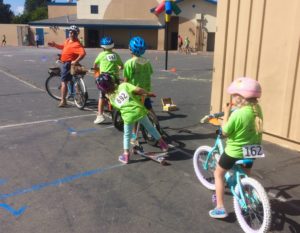
This year we held our first-ever cycling skills classes, including 11 in West Sacramento so far — and we’re planning for more next year, including classes in Sacramento.
Through the City of West Sacramento’s Safe Routes to School program, we also delivered cycling skills instruction at four elementary schools in West Sacramento and we’ve begun offering it at three more during the current school year.
Bike Valet
We provided valet bike parking for more than 10,000 bikes at some 250 community events, enabling thousands of people to bike to community events instead of drive. Those bike trips replaced car trips that would have pumped nearly 10 tons of carbon pollutants into the atmosphere and our lungs. Read more here.
Bike repairs
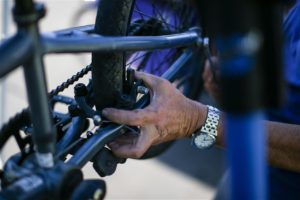 We performed safety checks and minor repairs on 675 bikes in North Natomas and on dozens of bikes in South Sacramento and Rancho Cordova neighborhoods that don’t have retail bike shops.
We performed safety checks and minor repairs on 675 bikes in North Natomas and on dozens of bikes in South Sacramento and Rancho Cordova neighborhoods that don’t have retail bike shops.

